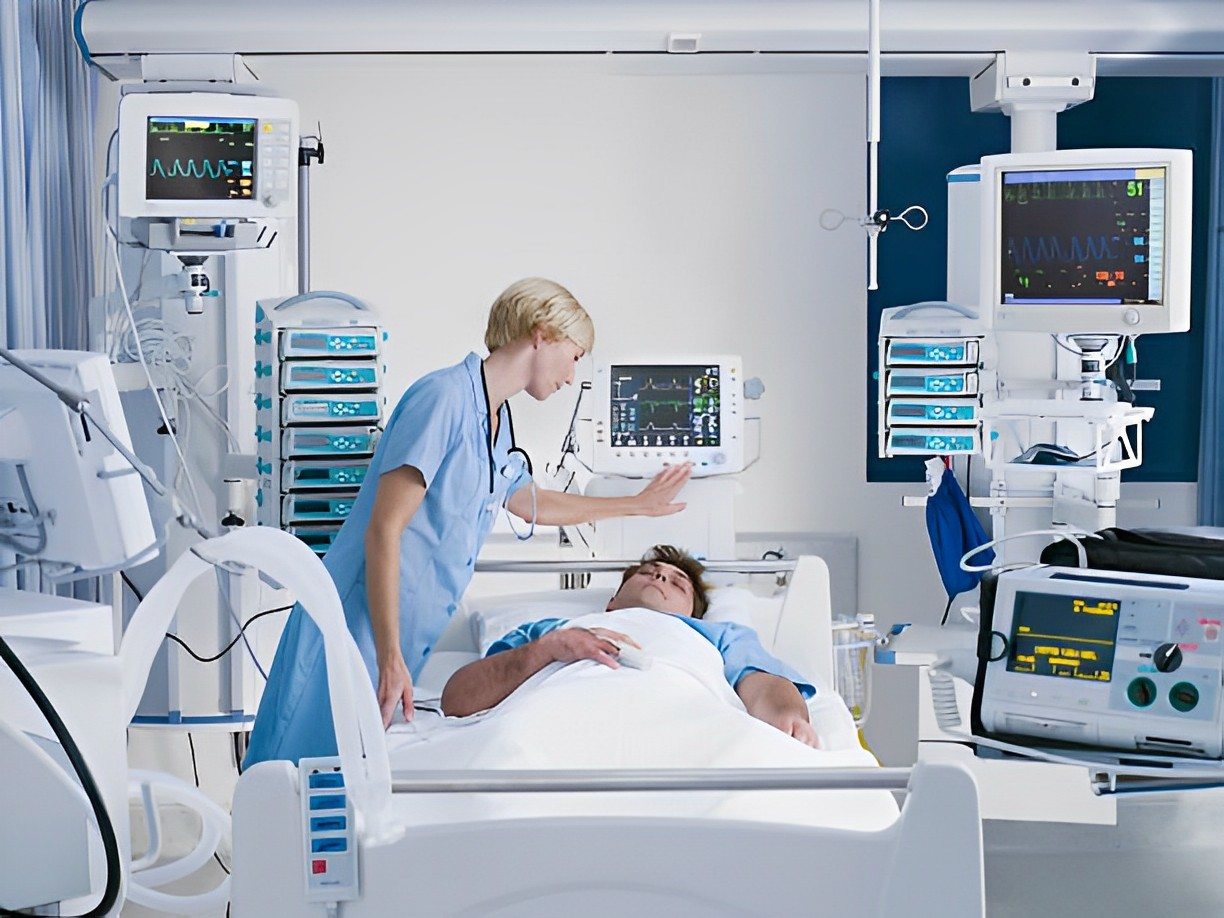Suppose you have recently taken a CPAP sleep study. In that case, it’s essential to understand the results and what they mean for your sleep disorder.
Sleep apnea is a condition of sleep breathing that causes interruptions during sleep. This may lead you to sleep poorly, wake up feeling unrefreshed, feel exhausted or weary during the day, have headaches, or feel unable to think correctly. Treatment for obstructive sleep apnea may improve your condition.
The field of sleep medicine has improved, and several novel treatment alternatives exist beyond the traditional CPAP mask. However, therapies for sleep apnea are not one-size-fits-all.
Your primary care physician will offer several treatment choices based on your degree and kind of severe obstructive sleep apnea. Sleep specialists employ overnight sleep studies to better comprehend how you sleep.
Traditionally, sleep studies were conducted in a professional sleep lab. Still, more and more choices are becoming accessible to research at home. Before commencing therapy, your physician will discuss with you the findings of this research, the CPAP sleep study reports.
This article will concentrate on how you should understand the outcomes of your laboratory sleep research.
What Does a Sleep Study Measure?

Polysomnography, commonly known as a sleep study, is a comprehensive diagnostic tool used to identify certain sleep disorders. During the research, polysomnography captures your brain waves, blood oxygen level, heart rate, respiration, and eye and leg movements.
Polysomnography may be performed at a hospital sleep disorders unit or a sleep centre. Polysomnography is sometimes conducted during the day to accommodate shift workers who generally sleep during the day.
In addition to diagnosing sleep disorders, polysomnography may commence or modify a treatment plan if a sleep problem has already been identified.
Occasionally, it may be feasible to do a sleep study at home. Home sleep apnea testing focuses mainly on identifying obstructive sleep apnea (OSA) using a limited number of sensors.
Related Article: How Do I Get A CPAP Sleep Study?
Why Is Sleep Monitored In A CPAP Sleep Study?
There are various home central sleep apnea test devices with multiple sensor configurations. Typically, they monitor your breathing, airflow, oxygen, and heart rate. One style includes information on blood vessel tone.
The usual process of falling asleep starts with the sleep stages known as non-rapid eye movement sleep (NREM). As measured by electroencephalography (EEG), brain waves significantly slow down during this period.
During NREM, your eyes do not wander quickly back and forth, in contrast to subsequent sleep phases. After one or two hours of non-REM sleep, brain activity resumes, and rapid eye movement (REM) sleep starts. Most dreams occur during REM sleep.
On average, you experience many sleep cycles every night, alternating between NREM and REM sleep every 90 minutes. Sleep disorders may interfere with this process.
Related Article: How Much Will A CPAP Sleep Study Cost Me
Your physician may suggest polysomnography if he/she believes you have the following:
- Sleep Apnea
- Periodic Limb Motion Disorder
- Narcolepsy
- Rem Sleep Behavior Problem
- Abnormal Sleeping Patterns
- Undiagnosed Persistent Insomnia
Understanding The Results Of Your CPAP Sleep Study

Below are the things you must grasp to read and interpret a sleep study result.
The First Number To Consider Is The Ahi Or RDI H3
This statistic, also known as the apnea-hypopnea index, is the definitive tool for assessing if a patient has sleep apnea.
It measures the patient’s average number of apneas and hypopneas or respiratory episodes that produce a substantial drop in airflow each hour.
Awakenings And Leg Movements
Sleep apnea has a name for a reason, right? This moniker paints a very restricted image of the respiratory and brain-related conditions that might disturb a patient’s sleep.
Multiple incidents may be cause for worry. Apneas are the most well-known symptom of this sleep disorder; they occur when a patient’s breathing pauses for at least 10 seconds. However, hypopnea, which is a partial halt of airflow, may be as dangerous.
Additional RERAs (respiratory effort-related arousals) may disturb breathing or the depth of sleep without meeting the criteria for any of the two events described above.
In addition, the sleep study should identify any arousals (partial awakenings) or excessive leg movements. All of these components should be considered when measuring sleep quality and contemplating treatment options.
Sleep Phases
People pass through many sleep phases during the night, including N1, N2, N3, and REM sleep.
Adults often cycle through these phases numerous times during the night. However, some sleep disorders may interrupt and fragment this cycle, preventing patients from achieving typical, restorative sleep.
Sleep apnea, for instance, may result in arousals that prevent patients from entering the deepest sleep stages, which they need to wake up feeling refreshed.
During the sleep study, brain monitors will track your sleep stages and enable professionals to notice any anomalies.
For some individuals, sleep apnea is worse during REM sleep. A 2012 research published in the Journal of Clinical Sleep Medicine evaluated 300 sleep studies. It showed that AHI doubled in 50 percent of individuals during REM sleep.
Physical Position
Similar to how sleep phases may affect the severity of sleep apnea, so can body posture. The same 2012 Journal of Clinical Sleep Medicine research that evaluated 300 sleep studies reported a twofold rise in AHI in 60% of participants resting on their backs.
Therefore, the sleep technician will attempt to have each patient sleep on their back for at least a part of the sleep study.
The sleep study should reveal the proportion of time you spend sleeping on your right side, left side, prone (on your stomach), and supine (on your back) (on your back).
Oxygen Desaturation (Sao2)
If you regularly stop breathing during sleep, you are not receiving enough oxygen in your circulation. Your oxygen saturation (SaO2) indicates the proportion of your body’s oxygen capacity being breathed.
During sleep, the oxygen levels of individuals with severe sleep apnea may fall as low as 60 percent daily. That means they take slightly more than half of the oxygen they need to function.
If your oxygen saturation falls below 95%, your brain and body are deprived of oxygen. This may result in brain damage and severe cardiovascular complications.
Using a PAP (positive airway pressure) device will return you to normal breathing and a restful night’s sleep, allowing you to breathe normally and sleep soundly.
The apnea-hypopnea index (AHI) is the most used measure to convey sleep apnea severity to patients. This is the average number of central, obstructive, mixed apnea, and hypopnea episodes per hour of sleep. Typically, it is represented as a number per hour, such as 15 events per hour.
Typical categories include:
- Normal: AHI < 5 per hour
- Mild: AHI ≥ 5, but < 15 per hour
- Moderate: AHI ≥ 15, but < 30 per hour
- Severe: AHI ≥ 30 per hour
Recommended Treatment Or Further Actions

Depending on the outcomes of your sleep study, the physician who interpreted it may prescribe a second sleep study or Continuous Positive Airway Pressure (CPAP) treatment. Here are some examples of the most frequent actions taken when a sleep study is completed:
- If just a baseline PSG revealed sleep apnea, you might be required to return for CPAP titration.
- If your CPAP titration was insufficient, you might be required to return for a second CPAP titration or a bi-level titration.
- If your CPAP titration is successful, you should arrange a CPAP setup.
- A home sleep apnea tests (HST) may need an in-center study, titration, or auto CPAP titration at home.
- If your physician suspects narcolepsy, you may need a PSG and MSLT.
Understanding The Many Forms Of Apnea Attacks
Apneas and hypopneas are two of the most frequent sleep study outcomes: Apneas are breathing pauses lasting at least 10 seconds. Hypopneas include shallow respiration.
Apnea occurrences are categorized according to their causes. The three primary classes are obstructive, central, and mixed apneas. Some physicians may also classify hypopneas; however, the precise classifications are contested.
Obstructive Occurrences
When the body attempts to breathe, but a constriction or blockage of the breathing passageways prevents air from moving freely, obstructive events occur. This restriction might be caused by physical characteristics or the relaxation of the chest and neck muscles during sleep.
Central Issues
Central events occur when the brain fails to communicate the breathing muscle (diaphragm) to engage. As a consequence, the individual briefly ceases to breathe. Fortunately, the individual will ultimately regain consciousness and live, often at a faster pace.
Mixed Occurrences
Mixed events include both obstructive and central apnea. Typically, central apneas progress to obstructive apneas when the brain stimulates the breathing muscles.
Conclusion
Understanding the results of a CPAP sleep study can significantly impact your approach to managing sleep disorders, particularly obstructive sleep apnea.
This comprehensive evaluation of your sleep patterns and breathing helps pinpoint specific issues, allowing for targeted interventions to dramatically improve your quality of life. Whether it’s adjusting to CPAP therapy or exploring other treatment options, each step is guided by detailed insights from your sleep study.
Remember, effective treatment not only enhances sleep quality but also reduces the risk of associated health issues, making it crucial to closely follow the recommendations provided by your healthcare provider based on your sleep study results.




